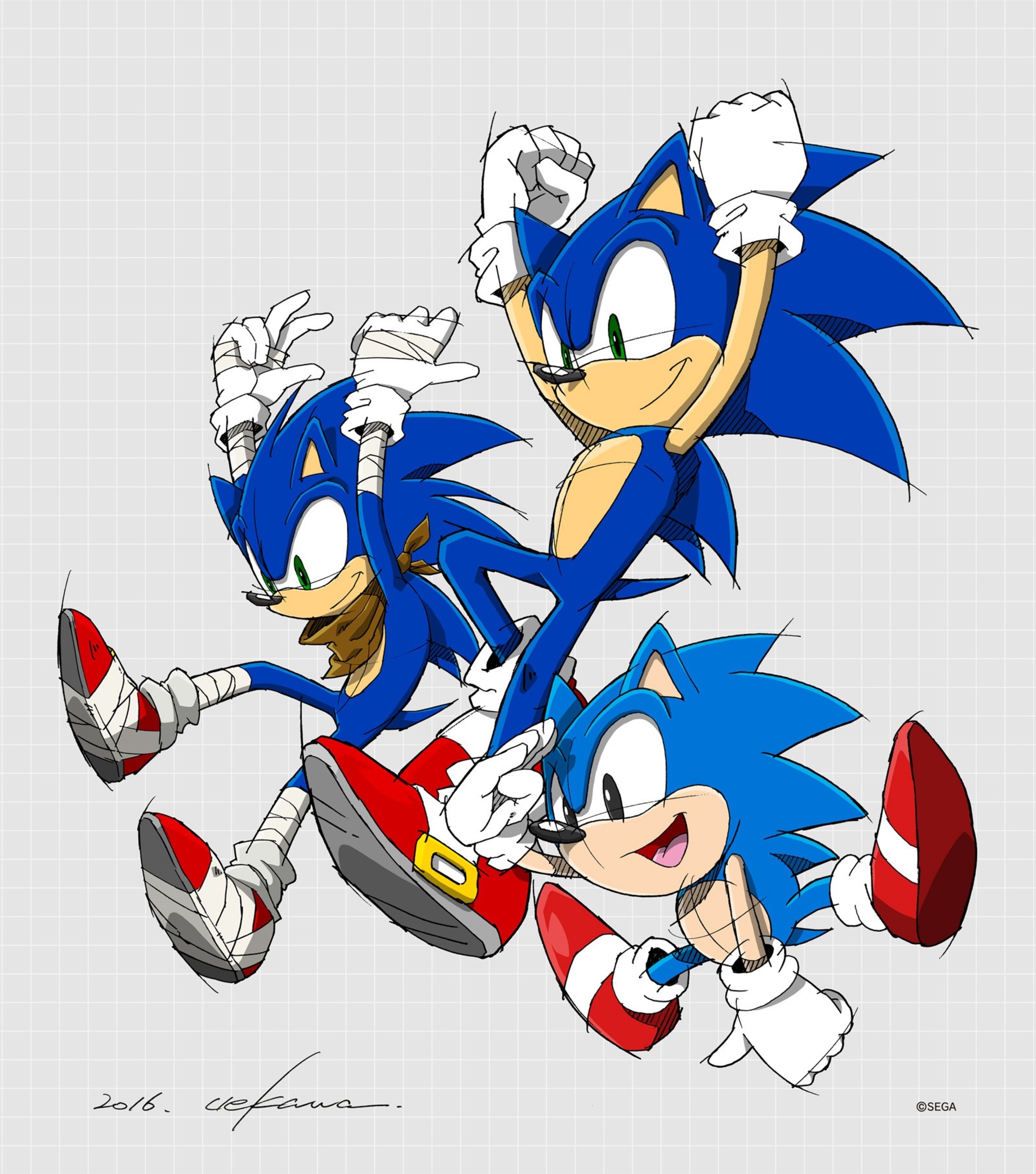Stage one: Classic Sonic
Around 1990/1991, a hedgehog was born from the felt tip of (SEGA’s game artist) Naoto Oshima’s pen. Called ‘Mr. Needlemouse’ in early drafts, the animal was defined by round features, sky blue skin tones and soft, protruding spikes; a pinkish pot-belly complemented the pointy red sneakers. The design followed the rulebook of Japanese manga characters: anthropomorphic animals (ie. showing human characteristics) with a head that’s disproportionately big and has large eyes. Also, as a nod to Disney, Sonic was given a pair of white gloves and socks not unlike those of Mickey Mouse.
Further details were absent: there wasn’t much detail to be had in a pixel sprite character when the first Sonic the Hedgehog game launched in 1991. In our Sonic the Hedgehog Art and design book programmer Yuji Naka explained the importance of ‘readability’ in the game. “I was very careful about having the character be recognized even in silhouette.” Imagery featured in marketing and in the first televised Sonic animation series, for other practical reasons, stayed close to the monochromatic look of cartoon characters. ‘Mr. Needlemouse’ later came to be known as ‘Classic Sonic’ - the Sonic the Hedgehog of all 2d games that catapulted him to worldwide fame.





